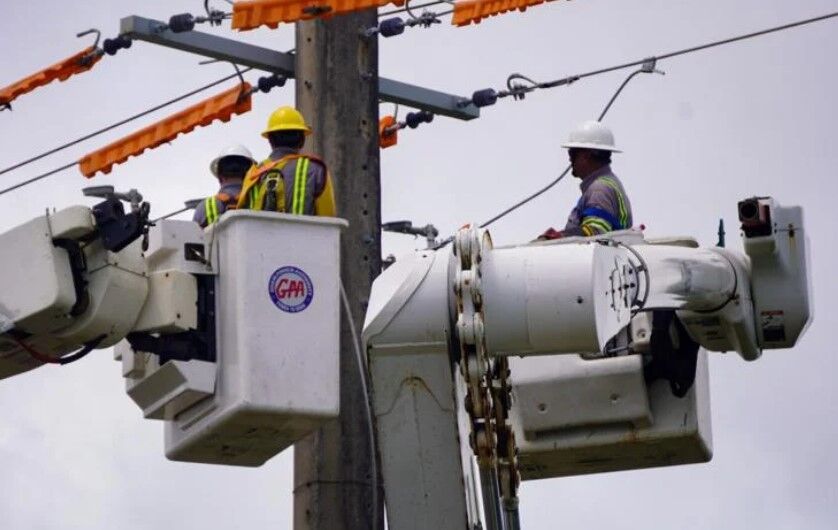HAGÅTÑA (The Guam Daily Post) — The Guam Power Authority is projecting a decline in the price of diesel fuel over the next several months, although the utility continues to face significant underrecovery on the price of fuel. GPA General Manager John Benavente said it’s too early to propose any changes in the fuel surcharge.
The surcharge, officially known as the Levelized Energy Adjustment Clause, or LEAC, is the portion of the monthly power bill that pays for the fuel needed to power island generators.
If the price of fuel is too high, and the surcharge cannot cover the cost, that leads to underrecovery.
The Public Utilities Commission, the entity responsible for setting utility rates, is often faced with having to balance making up any underrecovery with mitigating rate hikes too steep and too sudden for ratepayers.
The fuel surcharge has been rising since February 2021. The most recent set of increases began in July. The second rate hike for this set of increases will take effect in September, raising the LEAC to 29.6 cents per kilowatt-hour. That’s an increase of $44.41 added to the average residential power bill.
During Tuesday’s meeting with the Consolidated Commission on Utilities, the board with direct oversight of the power and water agencies, GPA Chief Financial Officer John Kim said the utility projected in May that diesel prices would be dropping and current forecasts are comparable to those predictions.
Residual fuel oil prices also are dropping but GPA is phasing out that fuel supply as it transitions to cleaner-burning diesel products.
The governor has now enacted a power credit program to assist all residential, master-metered and commercial GPA customers with their power bills. The program will grant $100 credits each month for five months.
Benavente said during the bill’s signing Wednesday that the PUC wants GPA to come back in October with updated numbers.
“That’s the time that there is a determination made whether we need to increase (the LEAC) or decrease it. It’s too early for us to set anything,” Benavente said.
Upcoming decisions
The PUC order for the latest LEAC states that the commission will decide at its Oct. 27 meeting whether there is a need to increase the LEAC further for November through the end of January.
GPA’s underrecovery at the end June was $41 million, according to Benavente.
GPA documents show that if the LEAC is raised to about 34 cents per kWh, the underrecovery could fall to $22.8 million between November and January. But that would mean another $46 added to the average residential bill.
Benavente indicated there could still be some hope for cheaper rates down the line, if oil prices keep falling.
“We buy our inventory once every month to a month and a half. So, therefore, whatever we buy today, it stays with us until it’s out the system. So, in the near future, if oil gets cheaper, by the next shipment, cheaper, therefore that means there’s hope in November for a lower rate,” Benavente said.

Guam Power Authority workers Joe Quinata, John Castro and Joe Pereda swapping out the old hardware on a utility pole with new gear on July 15 on Ysengsong Road in Dededo, Guam.











